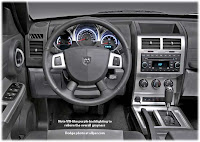To be able to complete the project for the 7400 competition I wasn't able to find locally the I/R diodes or the high output LEDs that will mentioned later. I will good over it POU, point of use, and a bill of material will be included at the very bottom.
Instructions
Using the master on/off switch either applies power to the circuit or removes it using the single-pole single-throw switch. After turning on, the strobe portion of the circuit has 3 conditions: A). Visible light strobe, B). Infrared spectrum strobe or C). both Visible and I/R together. This can be done one of two ways; by switching each light condition separately with the appropriate switch or, by using the switch marked both to activate both light conditions together. Once activated, the strobe lights, which are LED diodes, act in a “X” crossing pattern (wig-wag). The frequency in which the lights jump back and forth can be adjusted using the potentiometers, one for each diode type.In a secondary circuit, powered by main 5 volt source, is a 3 watt siren circuit, similar to the American police siren. Just like the strobe portion, once the master power switch is activated, the siren is switched separately from the strobes to allow for selectable times of use. To activate the emergency siren simply depress the only push button switch on the device. There is selectivity to the siren too. By rotating the beige knob counter clockwise you can take the siren from a whooping sound to a high-pitched scream.
To return the device to the ready position turn the siren off, place the toggle switches for the strobe functions in the up position (towards to the top) and flip the master power to off.
Point Of Use(POU)
As the title describes, this device was intended to be used in Search and Rescue, Military, and any situations in which signaling from the ground to air is needed. This circuit utilizes 5 watt white LEDs as primary signaling illumination, with a 3 watt blue LED used as part of the alternating pattern. Secondary to the signaling illumination is a strobe pattern that includes 3 watt IR LEDs and one blue low power LED. The white LEDs provide upwards of 200 lumens, which has a usable viewing distance of approximately 250-300 yards. Using condition one of the strobe device it enables the white/blue strobe. Using three 5W LEDs and one 3W blue LED provides hundreds of feet of usable viewing bandwidth. White is used to stand out against most any terrain and one blue is used as a depth of field or contrast color. This depth of field and distance would be difficult to see if you were just using one color especially since blue is the hardest color on the human eye to view. This viewing difficulty allows for the greatest long distance impact in operating conditions.As mentioned, there are two conditions to this device; the visible light strobe and the secondary Infrared strobe. Used in conjunction with night vision goggles, which amplify light (including a portion of the IR light spectrum), IR strobe can be a very useful tool. In night vision goggles, (NVGs) IR light does not diffuse as rapidly as white strobe would, especially in hazing or rainy conditions. Aerial operations, specifically in non-military S&R, typically work in the 400 - 750 ft of altitude range. This, as discussed above, is right in the sweet spot for the visible light white strobe and a more than safe range for IR. Just like the white strobe, the IR setup works in a crossing ‘X’ pattern. Two IR diodes flash and the next goes, which in this case includes one IR and one blue low power LED. Once again, this will give a good depth of field to the spotter.
Bill of Materials
Part used:| LED’s 2 - 5W White 3 - 1W Blue 3 - 3W I/R Diodes |
4 - 555 Timers | 1 - 9 volt battery and caddy | 5 - Single Pole Double Throw Switches | 1 - LM7805CT 5v Regulator |
| 1 - 7400 2-Input NAND Gates | 2 - 1k Ω Pots | 4 - 150 Ω resistors | 1 - 2.2k Ω resistor | 1 - 8 Ω speaker |
| 3 - 1 Cap | 1 - 7432 2-Input OR Gates | 2 - 7476 Dual J-K Flip-Flops | 2 - 100 μF Cap | 1 - .1 μF Cap |
| 1 - 1m Ω Pot | 3 - 10k Ω resistors | 2 - 1k Ω 1% resistors |





